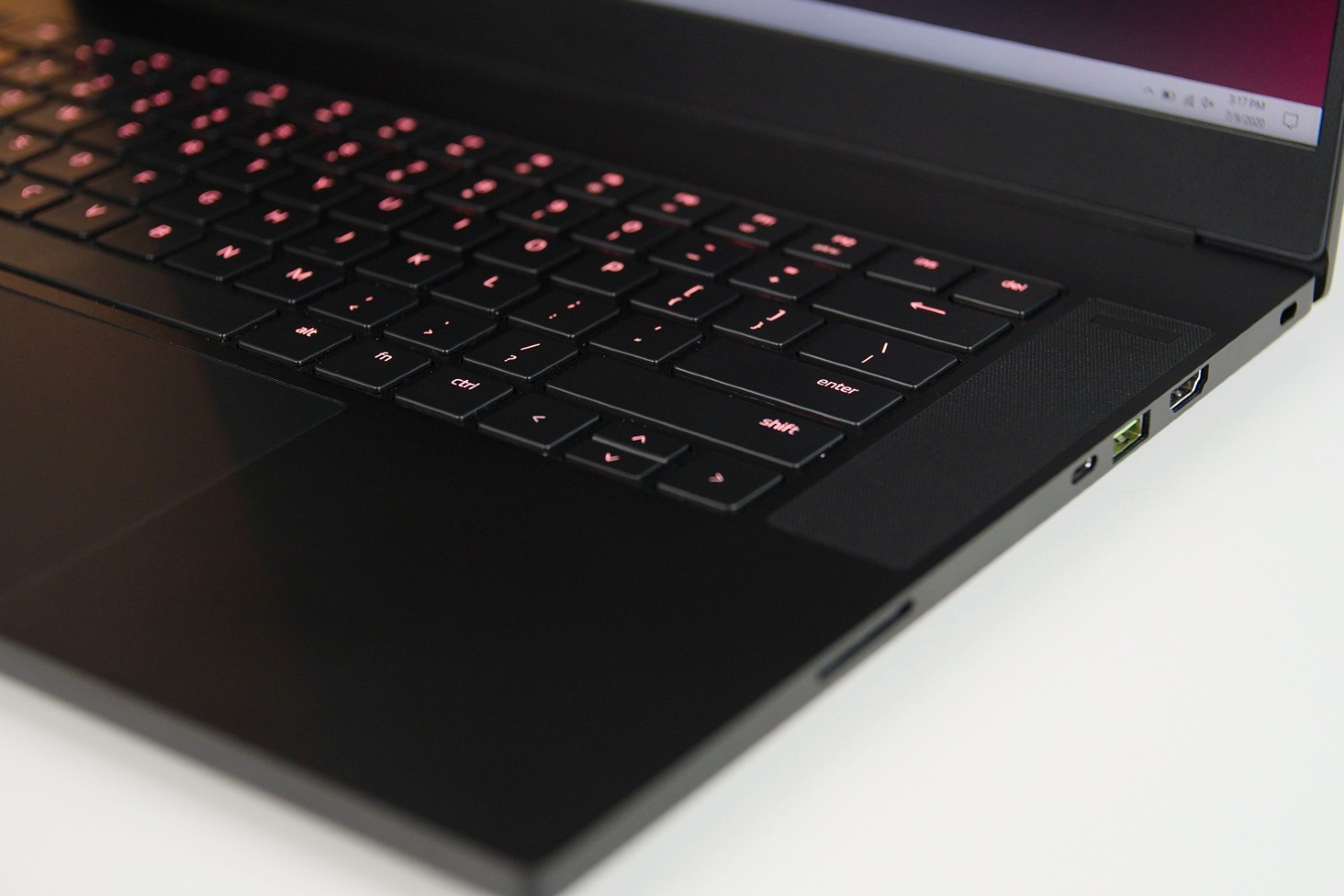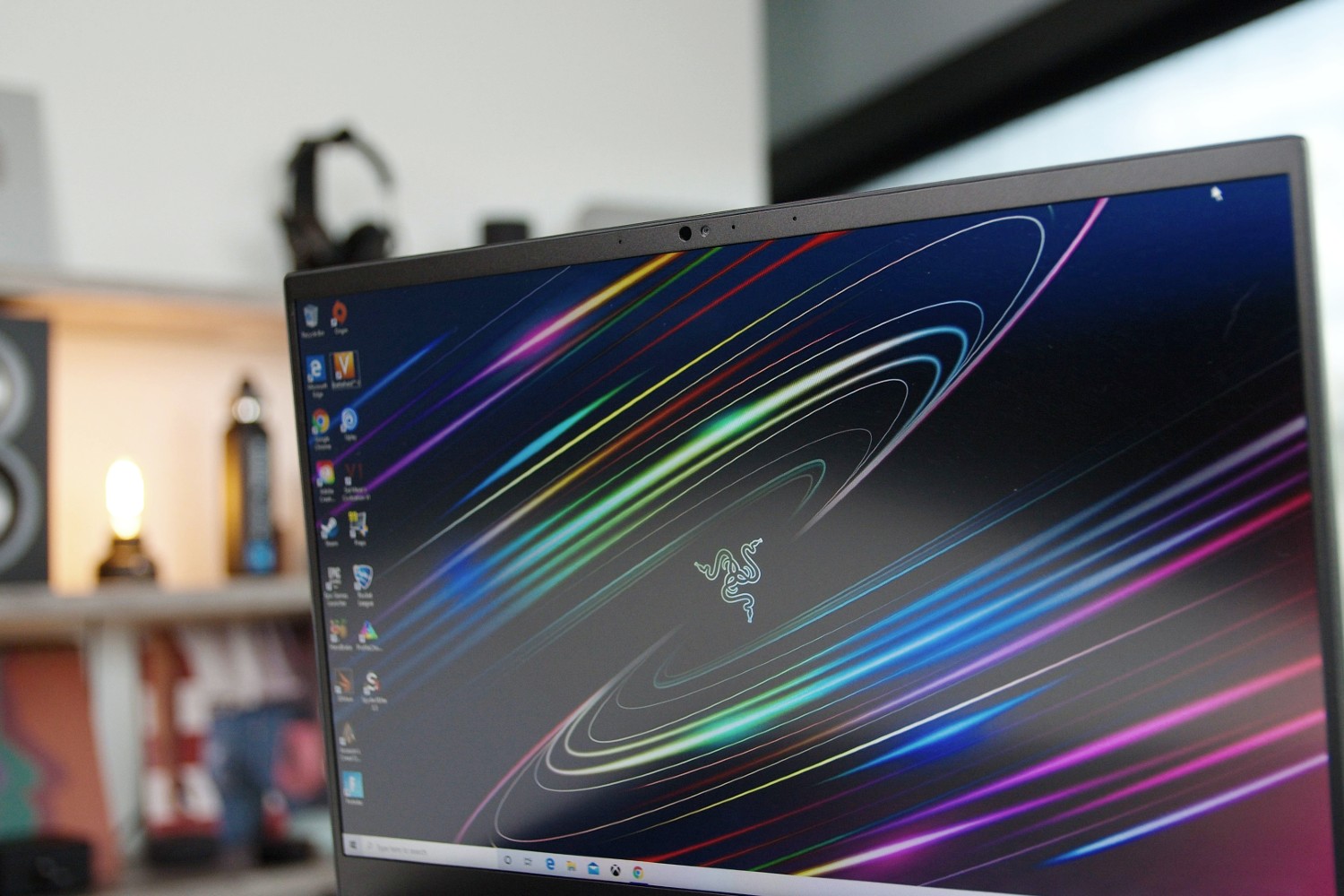The Razer Blade 15 has ranked among the best gaming laptops — and best laptops, period — for a few years now. It’s beautiful, well-built, and speedy, offering everything the discerning mobile gamer could ask for. Now, Razer has introduced the best competitor to its own machine, the Razer Blade 14, which packs tons of power into a smaller frame.
Choosing between these two machines is a chore; they’re both that good. Comparing them is also a challenge because, in many ways, they’re quite similar, while in others, they’re continents apart. Read on to see which is the better gaming laptop for you.
Specs
| Razer Blade 14 | Razer Blade 15 | |
| Dimensions | 12.59 inches by 8.66 inches by 0.66 inches | 13.98 inches by 9.25 inches by 0.67 inches |
| Weight | 3.92 pounds | 4.40 pounds |
| Processor | AMD Ryzen 9 5900HX | Intel Core i7-10750H Intel Core i7-10875H Intel Core i7-11800H Intel Core i9-11900H |
| Graphics | Nvidia GeForce RTX 3060 Nvidia GeForce RTX 3070 Nvidia GeForce RTX 3080 |
Nvidia GeForce RTX 3060 Nvidia GeForce RTX 3070 Nvidia GeForce RTX 3080 |
| RAM | 16GB | 16GB or 32GB |
| Display | 14-inch IPS, 144Hz | 15.6-inch IPS, 360Hz 15.6-inch OLED touch |
| Resolution | Full HD (1920 x 1080) | Full HD (1920 x 1080) IPS UHD (3840 x 2160) OLED |
| Storage | 1TB solid-state drive (SSD) | 512GB SSD 1T SSD |
| Ports | 2 x USB-A 3.2 2 x USB-C 3.2 1 x HDMI 2.1 1 x 3.5mm audio jack |
3 x USB-A 3.2 2 x USB-C with Thunderbolt 4 1 x Power Port 1 x HDMI 2.1 1 x SD card reader 1 x 3.5mm audio jack |
| Wireless | Wi-Fi 6 and Bluetooth 5.2 | Wi-Fi 6 and Bluetooth 5.2 |
| Operating system | Windows 10 Home | Windows 10 Home |
| Battery | 62 watt-hours | 80 watt-hours |
| Price | $1,800+ | $1,700+ |
| Review | 4.5 out of 5 stars | 4 out of 5 stars |
Design

The Razer Blade 14 and 15 are almost identical machines in their aesthetic and their construction. Starting with look and feel, they both sport the typical Razer Blade all-black aluminum exterior, green snake logo, and none of the embellishments and aggressive venting that you’ll find on other gaming laptops. Either machine looks like a “regular” laptop, with a refined and conservative design that’s at once elegant and simple — reminiscent of the MacBook line, in fact.
They’re also both just as equally well built, with rigid chassis and the kind of build quality that exudes quality and confidence. You won’t find any bending, flexing, or twisting in either the Blade 14 or the Blade 15, and in this respect, they’re once again virtually identical. That’s a very good thing, especially given that these are expensive machines.
The biggest difference is in their respective sizes. The Razer Blade 14 is smaller, of course, built around its 14-inch display and coming in 1.5 inches less wide, about half an inch less deep, and just a fraction of an inch thinner at 0.66 inches versus the Blade 15 at 0.67 inches. The Razer Blade 14 is also lighter at 3.92 pounds, very respectable for a high-powered gaming laptop, while the Razer Blade 15 is an equally respectable 4.4 pounds.
Both laptops sport similar keyboards that offer great travel and a snappy mechanism that’s precise and accurate for both productivity typing and gaming. There’s also per-key RGB backlighting customizable with more brightness levels than you’ll find on the typical Windows 10 laptop. If there’s a complaint, it’s that the keycaps are a little small, but that’s nitpicking. Both laptops enjoy great keyboards.
Their touchpads are also excellent, with decent sizes (the Razer Blade 15’s is larger, of course) and a glass surface that’s smooth and precise. Microsoft’s Precision Touchpad drivers are on hand to enable reliable Windows 10 multi-gesture support. There are no complaints here.
Connectivity is the biggest difference between these two machines. The Razer Blade 14 has two USB-A 3.2 ports, two USB-C 3.2 ports (with no Thunderbolt support because of the AMD chipset), a full-size HDMI 2.1 port, and a 3.5mm audio jack. There’s no SD card reader, which will be a disappointment to creators. However, the Razer Blade 15 is packed with ports with three USB-A 3.2 ports, two USB-C ports with Thunderbolt 4, a proprietary Power Port, a full-size HDMI 2.1 port, an SD card reader, and a 3.5mm audio jack. Both laptops feature the latest in wireless connectivity with Wi-Fi 6 and Bluetooth 5.2.
Performance

The Razer Blade 15 offers a host of Intel CPUs, mostly 11th-generation models, from the Core i7-10750H to the Core i9-11900H. GPU options include the Nvidia GeForce RTX 3060, the RTX 3070, and the RTX 3080. It comes in Base and Advanced versions that let buyers mix and match components for optimal price/performance. The Razer Blade 14, on the other hand, has just three configurations, all with the AMD Ryzen 9 5900HX CPU and with the same GPU options as the 15-inch model. The Razer Blade 15 has some powerful components for sure, but what’s more amazing is the amount of power that Razer managed to pack into the Razer Blade 14.
We reviewed the Razer Blade 15’s previous generation with the Core i7-10875H and RTX 2080 Super Max-Q GPU, as opposed to the Razer Blade 14 with the Ryzen 9 5900HX and RTX 3070. While the newest Razer Blade 15 would likely be more competitive, in our testing, the Razer Blade 14 was only slightly slower in actual gaming benchmarks. It scored 8,605 in the 3DMark Time Spy test compared to the Blade 15’s 7,637. In Civilization VI, the Razer Blade 15 hit 159 frames per second (fps) at 1080p and medium graphics versus the Blade 14 at 126 fps. In Battlefield V, the Blade managed 122 fps at 1080p and medium graphics, compared to the Blade 14’s 115 fps. Frankly, this isn’t a very meaningful comparison because too many components are different. Still, the Blade 14 should be commended for its gaming performance — and it can be configured with an RTX 3080 for even better performance.
Looking at CPU-intensive tasks, the Razer Blade 14 is going to be faster in most cases. The Ryzen 9 5900HX is an eight-core, 16-thread CPU, more than all the Razer Blade 15 options except the eight-core, 16-thread Core i9-11900H. In our Handbrake test that encodes a 420MB video as H.265, the Blade 14 finished in just 101 seconds, compared to the Blade 15’s 134 seconds. We don’t have the Core i9-11900H in our database, but it’s likely to perform similarly. In Cinebench R23, the Blade 14 hit an impressive 1,434 single-core and 11,226 multi-core, compared to the Blade 15 at 1,202 and 6,166. Again, the high-end Blade 15 is likely to compete more strongly, but again, the Blade 14 is a high-speed 14-inch laptop.
Unless you’re the hardest-core gamer, the Blade 14 is going to provide all the power you need in the most compact form. You can probably configure the Blade 15 to be just as fast or maybe a little faster, but you’ll be carrying around a much larger and heavier machine.
Display

Looking at Razer’s configuration page for the Blade 15, you’ll find a dizzying array of available displays. There’s a Full HD version with a 360Hz refresh rate, a QHD version with 240Hz, a QHD display with 165Hz, a 4K OLED option with 60Hz, and a Full HD panel with 144Hz. Choice is great, but note that these displays are broken out between the Base and Advanced models, and you may not get the CPU/GPU combination you want with precisely the display you’d prefer. The Blade 14 offers just two displays, a Full HD version with 144Hz on the lowest-end model and a QHD version with 165Hz on the two higher-end options.
Regardless of which display you get, though, you’re virtually guaranteed to get an excellent display. We tested the Blade 15 with the discontinued 300Hz Full HD display that offered average (but good) color width, good accuracy, a 1,010:1 contrast ratio (above our preferred 1000:1 level), and with its only weakness being a tame 301 nits of brightness (barely above our preferred 300 nits). The Blade 14 we reviewed had the QHD display at 165Hz, and it offered surprisingly wide colors at 90% of AdobeRGB and 100% of sRGB (good enough for creators), very good color accuracy, but again relatively low brightness at 315 nits and a disappointing 830:1 contrast ratio.
Any of the available displays will provide for an excellent gaming experience and a pleasant, productive working environment. That is, except for the Blade 15’s 4K OLED display that’s limited to 60Hz — that display’s colors, brightness, and contrast will be best-suited for creative types than for gamers.
Portability

Clearly, the Razer Blade 14 is the more portable machine, being smaller and quite a bit lighter. The Blade 15 is equivalent to other non-gaming 15-inch laptops, meaning it’s going to be heavier and take up more space in your backpack. Given all of the power available with the Razer Blade 14, you’re really not making much of a compromise for enhanced mobility.
Battery life is tough to compare, given the variance in components. The Razer Blade 14 has a 62 watt-hour battery, which isn’t a lot for the display, CPU, and GPU that you can configure. Even so, we saw impressive battery life out of the smaller machine, all things considered. It went for three hours longer than the Blade 15 with its 80 watt-hour battery in our video looping test — 11.5 hours — and roughly the same difference in our web browsing test where the Blade 14 managed 8.25 hours. Neither of these is impressive scores compared to premium productivity laptops, but they’re great for gaming machines. And clearly, the Blade 14 manages to squeeze more longevity out of its battery than the Blade 15.
So, not only is the Blade 14 naturally smaller and lighter, but it also lasts longer on a charge. That makes it the more portable gaming machine by far.
The Razer Blade 14 takes its place as the best gaming laptop you can buy
The Razer Blade 14 starts at $1,800 for an AMD Ryzen 9 5900HX, 16GB of RAM, a 1TB SSD, an RTX 3060, and a 144Hz Full HD display. It tops out at $2,800 for the same CPU, RAM, and storage, but with a 165Hz QHD display and an RTX 3080. This is an expensive machine.
The Razer Blade 15 can be had for as little as $1,700 for a Core i7-10750H, 16GB of RAM, a 512GB SSD, a 144Hz Full HD display, and an RTX 3060. At the high end, you’ll spend $3,400 for a Core i9-11900H, 32GB of RAM, a 1TB SSD, a 60Hz 4K OLED touch display, and an RTX 3080. This is an even more expensive machine.
In the end, unless you really want the OLED display and Intel CPU available with the Razer Blade 15, the Razer Blade 14 is the better choice. It’s (slightly) less expensive, far easier to carry around, and it offers great gaming, productivity, and creative performance that will suit the needs of all kinds of users. The Razer Blade 14 is an amazing accomplishment, and it wins this head-to-head handily.


